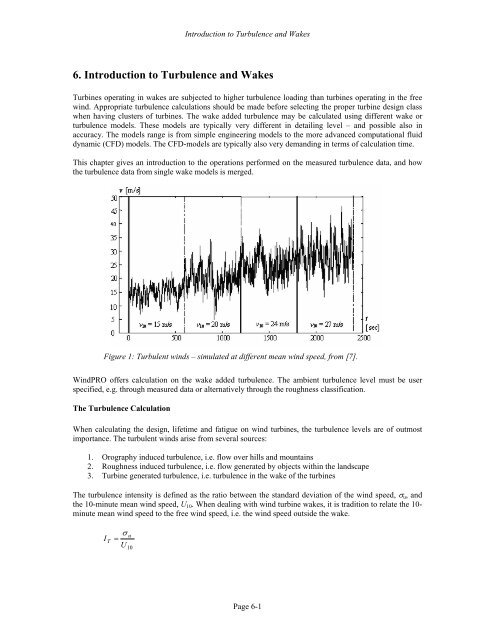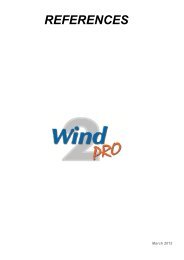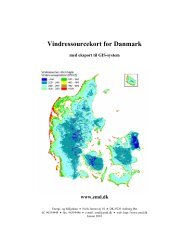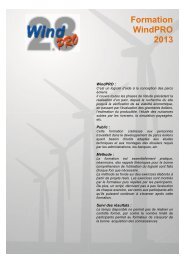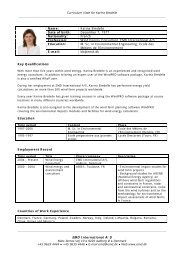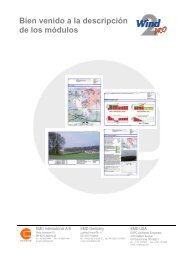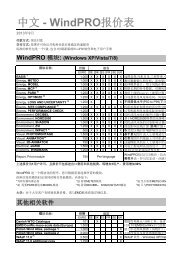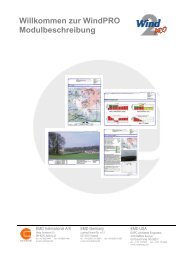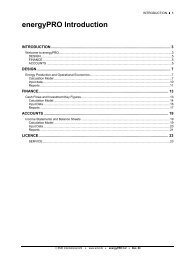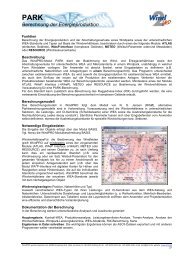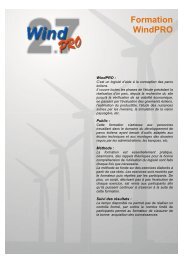WindPRO / PARK - EMD International AS.
WindPRO / PARK - EMD International AS.
WindPRO / PARK - EMD International AS.
Create successful ePaper yourself
Turn your PDF publications into a flip-book with our unique Google optimized e-Paper software.
Introduction to Turbulence and Wakes<br />
6. Introduction to Turbulence and Wakes<br />
Turbines operating in wakes are subjected to higher turbulence loading than turbines operating in the free<br />
wind. Appropriate turbulence calculations should be made before selecting the proper turbine design class<br />
when having clusters of turbines. The wake added turbulence may be calculated using different wake or<br />
turbulence models. These models are typically very different in detailing level – and possible also in<br />
accuracy. The models range is from simple engineering models to the more advanced computational fluid<br />
dynamic (CFD) models. The CFD-models are typically also very demanding in terms of calculation time.<br />
This chapter gives an introduction to the operations performed on the measured turbulence data, and how<br />
the turbulence data from single wake models is merged.<br />
Figure 1: Turbulent winds – simulated at different mean wind speed, from [7].<br />
<strong>WindPRO</strong> offers calculation on the wake added turbulence. The ambient turbulence level must be user<br />
specified, e.g. through measured data or alternatively through the roughness classification.<br />
The Turbulence Calculation<br />
When calculating the design, lifetime and fatigue on wind turbines, the turbulence levels are of outmost<br />
importance. The turbulent winds arise from several sources:<br />
1. Orography induced turbulence, i.e. flow over hills and mountains<br />
2. Roughness induced turbulence, i.e. flow generated by objects within the landscape<br />
3. Turbine generated turbulence, i.e. turbulence in the wake of the turbines<br />
The turbulence intensity is defined as the ratio between the standard deviation of the wind speed, σ u , and<br />
the 10-minute mean wind speed, U 10 . When dealing with wind turbine wakes, it is tradition to relate the 10-<br />
minute mean wind speed to the free wind speed, i.e. the wind speed outside the wake.<br />
I<br />
T<br />
σ u<br />
=<br />
U 10<br />
Page 6-1


